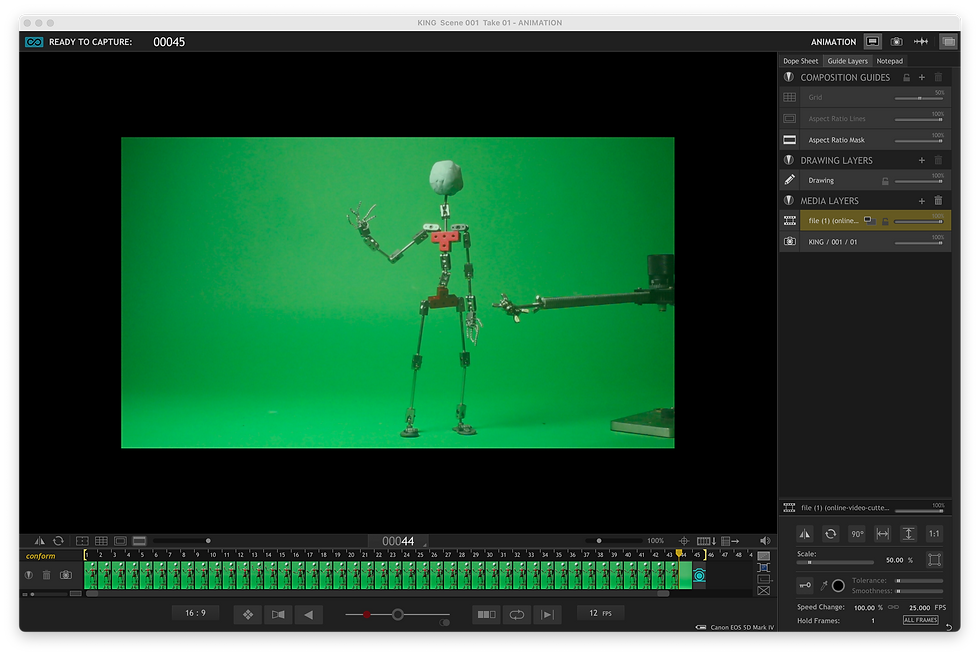- Anthi Metaxa
- Mar 23, 2023
- 3 min read
The last subject that I need to experiment with before attempting to animate properly, is to play around with framerate. The framerates that I will be using are:
12 fps
24 fps
For this experiment I want to see what are the advantages and disadvantages of each framerate and how they could be used effectively throughout the armature's movements.
So, the first framerate that I wanted to experiment with was 12fps.
12 FRAMES PER SECOND EXPERIMENT:
The first thing I had noticed when working in 12fps was that it was less smooth such as 24fps, since there were less frames to experiment with.
However, even saying this, the idea of using 12fps felt a lot easier for me. With this framerate it was a lot easier to experiment with the dragging of frames and just in general experimenting with the frames themselves due to the low framerate. I was extremely proud of capturing really slow movement with the hands throughout the animation, so this framerate was extremely useful to be able to show my intentions.
In addition to this, 12fps is commonly used when trying to create a more stylized piece since I will be working on two's instead of working on one's.
Lastly, the idea of using this frame rate allowed me to create more of a Stop Motion feel to my work, since the framerate is a lot lower instead of working in 24fps which is commonly used for animation in films.

Here is a screenshot of my work in Dragon frame. It shows at the bottom, the framerate that I would be working in, which in this case is 12fps. It also shows the me using the onion skinning tool, hence why the armature looks faded and not matte in the program.
IMPROVEMENTS?
I noticed that as mentioned in previous posts of mine, that the compositing stage would be extremely difficult since the rig blends in with the armature, so it would be hard to differentiate the two.
Another thing I could improve on, was the framing of the camera. It looks like the feet and head are close to being out of frame so perhaps adding more space would be a lot better.
All and all, there are still things to improve on, such as adding movement to the hips and waist, however, this experiment was definitely and improvement.
24 FRAMES PER SECOND EXPERIMENT:
Even though 24fps feels a bit a lot smoother due to the more framed needed in the animation, I felt as though it felt too fast at times, especially for this movement that I was trying to portray. So, if I did end up using 24fps it would be important to try holding on specific frames to help with timing.
One major disadvantage that I noticed about this framerate was that, if one frame is not suited for the movement, it will look extremely jittery and out of place, which in this example the right hand is really wobbly and shaky.
Another thing to note, is that working in 24fps compared to 12 is a lot more time consuming, so if the outcome isn't the best then the movement will look off.

Here is a screenshot of my workspace in dragon frame while experimenting with 24fps. It was extremely useful to have my reference on the side while filming, since I can toggle between the frames and see the slight movements of the movement through the reference.
CONCLUSION
I believe I will be able to alter the framerate depending on the speed of the movement that I would like to capture for my show reel.
So, if I want to capture really slow movements, then 12fps is the better frame rate for me to go for and if I want a really fast movement then I will end up picking 24fps.
All in all, this entire process for my project was a whole learning process through repetition.
But isn't that what animation is for?
-fotor-bg-remover-20230601211148.png)


